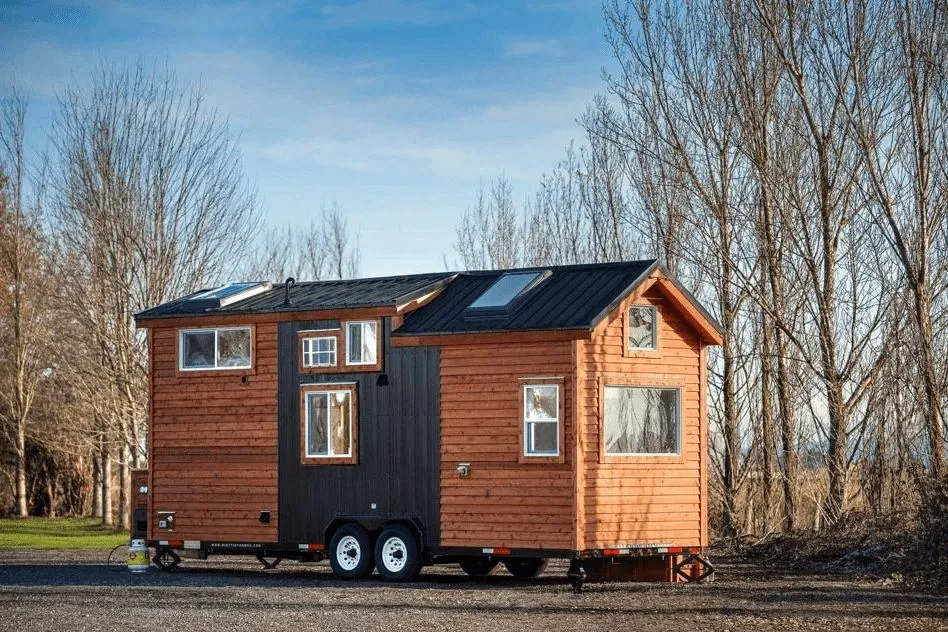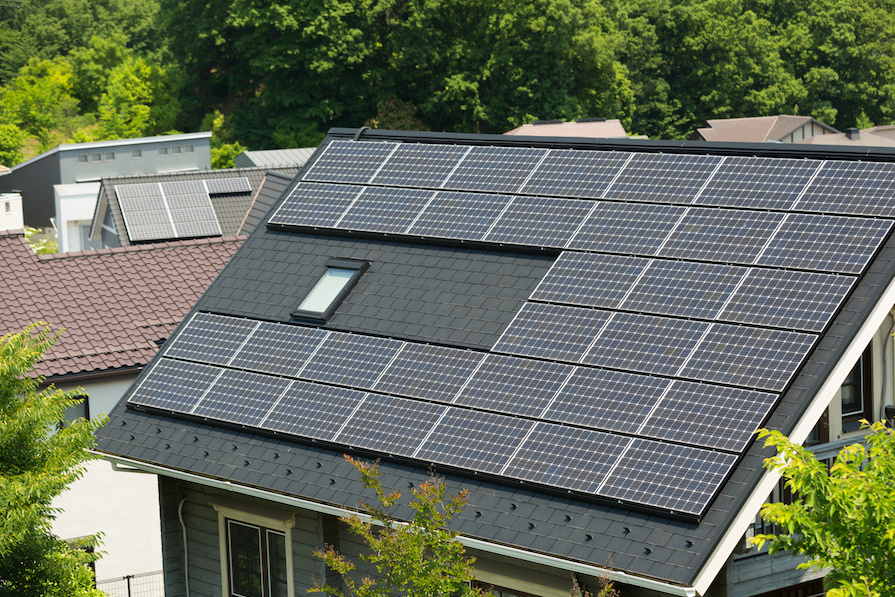Living off the grid in an off-the-grid cabin offers a unique and serene lifestyle, disconnected from the busy urban life. However, building an off-grid cabin requires careful planning, consideration of the environment, and understanding of your own needs.
In this comprehensive guide, we will walk you through the journey of building your off the grid cabin. We will cover everything from selecting the right location and designing the layout to implementing sustainable energy systems and ensuring a comfortable living space. With the information and advice provided, you can create a self-sufficient retreat that aligns with your vision of off-grid living.
Key Considerations When Building an Off-the-Grid Cabin
When building an off-grid cabin, there are several key considerations to keep in mind. Here are some important factors to consider:
| Budget and Timelines | – Budget Considerations: Include construction costs, permits, land purchase, and maintenance. – Timeline: Establish a timeline, noting that self-building takes longer. |
| Location Selection | – Resources: Ensure access to trees and water. We listed 5 best states to live off grid as reference.
– Regulations: Check local laws for restrictions on cabin specifications and utilities. |
| Design and Floorplan | – Styles: Consider A-frame, log cabin, straw bale, etc.
– Layout: Plan rooms and functionality using free floorplans or online designs. |
| Generating Power | – Solar Energy: Use high-efficiency solar panels and reliable charge controllers, supplemented by deep-cycle batteries.
– Wind Turbines: Add if a location is windy. –Micro-Hydro Electricity: Implement if there is flowing water nearby. – Non-Renewable Backup: Consider a propane generator for backup. |
| Construction Steps | – Selecting The Logs: Opt for straight, seasoned logs free from defects. Choose between round or square logs.
– Laying the Foundations: Use concrete piers, slab-on-grade, or pier-and-beam. – Raising the Log Walls: Employ notch-and-groove techniques or modern fasteners, ensuring insulation. – Fitting Windows and Doors: Install securely after cutting proper openings. – Building the Gable Walls and Roof: Use appropriate roofing materials like metal, shingles, or thatch. |
Designing Your Off-Grid Cabin
There are several elements to consider when it comes to the architectural style and design concept of your off-grid cabin. Here are some ideas:
Energy Efficiency: Choose an architectural style that promotes energy efficiency. Incorporate excellent insulation, double-pane windows, and passive solar designs such as large south-facing windows to maximize natural light and warmth.
Space Planning: Make the most of every inch of space in your cabin. Utilize multifunctional furniture such as folding tables, built-in storage cabinets, and under-bed storage to optimize space utilization and minimize clutter.
Energy Solutions:
-Solar Panels: Install solar panels to collect solar energy and convert it into electricity. Position the solar panels optimally to maximize energy collection by ensuring they are orientated and angled correctly.
-Wind Energy: If your location has a consistent wind resource, consider installing a wind turbine to harness wind energy for electricity generation.
-Small Hydroelectric Power: If you have streams or rivers flowing through your land, explore the possibility of implementing a small hydroelectric system to generate clean energy.
Water Collection, Storage, and Purification Systems:
-Rainwater Harvesting: Install a rainwater harvesting system to collect rainwater. This water can be used for irrigation, washing, and other non-potable purposes.
-Storage: Choose appropriately sized tanks or containers to store the collected rainwater for later use.
-Purification: Utilize water filters or water purification systems to treat rainwater or other water sources for safe drinking water.
Waste Disposal Methods:
-Composting Toilets: Consider using composting toilets, which convert human excreta into organic fertilizer, making them suitable for off-grid environments.
-Ecological Wastewater Treatment: Explore ecological wastewater treatment systems, such as artificial wetland filtration systems, to treat wastewater and minimize environmental impact.
Remember, the architectural style and design concept you choose should align with your personal preferences, the surrounding environment, and the resources available in your off-grid location. It’s important to find a balance between aesthetics, functionality, and sustainability to create a harmonious and efficient living space.
7 Avoidable Off the Grid Cabins Minefields
Building an off-grid cabin can be a challenging but rewarding project. However, there are several mistakes that you should avoid to ensure a successful build. Here are the 7 mistakes to steer clear of when building your dream off-grid cabin:
Choosing the Wrong Location
Carefully evaluate potential locations based on factors such as sun exposure, water supply, accessibility, terrain, building codes, and wildlife risks. Take your time to find the right location that suits your needs and avoids future complications.
Underestimating Your Budget
Many off-grid homebuilders underestimate the total budget required for their cabin. Account for not only the basic structure construction costs but also off-grid utility systems, site preparation, special equipment rentals, permitting, and labor. Padding your budget estimate generously will help cover unexpected costs.
Prioritizing Utilities Improperly
Focus on the core basics for daily living first, such as water supply, passive heating/cooling, and electrical systems. Once these essentials are in place, you can add additional utilities and comfort features.
Skimping on Insulation
Proper insulation is crucial for maintaining comfortable temperatures in an off-grid cabin. Aim for insulation with high R-values and invest in weatherproofing and sealing to prevent air leaks.
Not Accounting for Site Preparation
Be prepared for the amount of site preparation required before actual construction can begin. Clearing land, leveling, excavation, and other tasks can be costly and time-consuming if not properly planned for.
Overlooking Security Concerns
Consider security measures in your building plans and budgets. This may include perimeter lighting, security alarm systems, reinforced exterior walls, and doors. Additionally, consider investing in dedicated off-grid power sources to ensure your security system stays operational even in a grid outage.
Attempting Too Much DIY
While it’s great to do as much of the construction yourself as possible, recognize your limits and outsource specialized work that you are not equipped for. Hiring skilled professionals for complex tasks like solar power, electrical wiring, and septic installation can save you from potential mishaps.
By avoiding these mistakes and planning ahead, you can increase your chances of successfully building your dream off-grid cabin.
Off the Grid Cabin in the U.S. Policy
The Off the Grid Lodge in America policy includes several tax incentives and credits aimed at promoting renewable energy and energy efficiency. Here are some key provisions:
Production Tax Credit (PTC) for Renewable Electricity: This tax credit applies to eligible renewable energy projects and equipment. It provides a tax credit of up to 2.75 cents per kilowatt-hour based on the electricity generated. To qualify for this credit, taxpayers must meet certain wage standards and employ a sufficient proportion of registered apprentices.
Investment Tax Credit (ITC): The ITC applies to renewable energy equipment such as solar panels and wind turbines. It allows a 30% credit against the equipment costs. This credit helps offset the upfront investment in renewable energy systems, encouraging their adoption.
Residential Energy Tax Credit: This tax credit targets residential solar panels, wind turbines, and other equipment. It provides a 30% credit against the equipment costs, making it more affordable for homeowners to invest in renewable energy systems for their off-grid lodges.
Modified Accelerated Cost Recovery System (MACRS): The MACRS is applicable to renewable energy equipment used for commercial and industrial purposes. It allows businesses to depreciate the equipment costs over multiple years, spreading out the financial burden and incentivizing the adoption of renewable energy technologies.
Low-Income Community Investment Tax Credit: This tax credit aims to encourage renewable energy facilities in low-income communities. It provides additional investment tax credits for solar or wind facilities in these areas, increasing the investment tax credit by 10% or 20%. The goal is to promote clean energy development in underserved communities, benefitting individuals and communities affected by health or environmental disparities.
These tax incentives and credits under the Off the Grid Lodge in America policy aim to support the transition to renewable energy, incentivize investment in clean energy technologies, and promote energy efficiency in residential and commercial settings. These provisions can help make off-grid living more financially viable and attractive for individuals and businesses across America.
How do off-the-grid cabins handle the weather?
Off-the-grid cabins are designed to be self-sufficient and resilient to various weather conditions. Here are some strategies they use:
- Insulation: High-quality insulation keeps the cabin warm in winter and cool in summer.
- Solar Power: Solar panels provide electricity, reducing reliance on external power sources.
- Water Management: Rainwater harvesting systems and water storage tanks ensure a steady water supply.
- Heating and Cooling: Wood stoves, propane heaters, and natural ventilation systems maintain comfortable indoor temperatures.
- Durable Construction: Using weather-resistant materials like metal roofing and treated wood enhances durability against harsh weather.
What is the cost to build a small off-grid cabin?
The cost to build a small off-grid cabin varies widely based on location, materials, and design. Here are some general estimates:
- Basic Cabin: $10,000 – $30,000
- Small, simple design
- Basic amenities
- DIY construction
- Mid-Range Cabin: $30,000 – $60,000
- Larger size
- Higher-quality materials
- More amenities (e.g., solar power, rainwater systems)
- High-End Cabin: $60,000 and above
- Custom design
- Premium Materials
- Advanced off-grid systems (e.g., advanced solar, battery storage, high-efficiency appliances)
How to build an off-grid cabin with NO PERMITS?
Building an off-grid cabin without permits involves several key steps:
- Research Zoning Laws: Check local zoning laws and regulations to identify areas with fewer restrictions.
- Choose a Remote Location: Opt for a location in rural or unincorporated areas where building codes may be less strict.
- Small Footprint: Build a small cabin (typically under 200 square feet) to avoid permit requirements in some areas.
- Portable Design: Consider a mobile or prefabricated design that can be moved and may not require permits.
- Minimalist Approach: Focus on basic, essential features to simplify construction and avoid inspections.
- DIY Construction: Building the cabin yourself can help avoid attracting attention from authorities.
- Off-Grid Systems: Use solar power, composting toilets, and rainwater harvesting to stay independent from municipal services.
By following these steps, you can build a simple, self-sufficient cabin without needing permits, provided you stay within the legal requirements of your chosen location.













